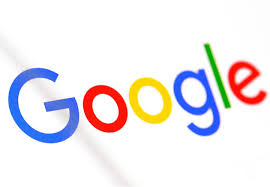MUMBAI | BENGALURU: For a
company that is known to dominate the global online advertising market along
with social networking giant Facebook, Google has itself emerged as one of the
top advertisers in India over the past two years. The online search giant was
among India’s largest advertisers in 2017-18, shelling out huge dollars to
create awareness about and drive adoption of, its products.
Last year, Google increased media investments
for its payments and services businesses, in particular, besides its hardware
products — Google Home (smart speaker) and Google Pixel.
The company is learnt to have spent around Rs
330 crore in 2017 on traditional mediums, or what are offline channels for
advertising, as per media planners tracking advertising budgets. Offline
mediums include television, print, radio and outdoors. Till November 2018, that
spending increased to Rs 540 crore, as per data collated by media agencies,
accessed and reviewed by ET. This figure does not include its spending on
online channels. “Google’s overall media investment, along with digital in
2018, is estimated at Rs 1,100 crore and almost 50-55% of this is digital.
Within digital, around 70% would be their own platform spends and balance 30%
other publishers,” said a senior executive at a media planning agency on the
condition of anonymity. Aside of the ad spends, Google appointed celebrity
brand ambassadors, including former India cricket captain Rahul Dravid and
actress Priyanka Chopra (for Pixel smartphones), adding to its marketing costs.
As per the Registrar of Companies, Google’s ad
and promotional spending in India was Rs 696 crore in the financial year
through March 2018, an increase of 45% over the previous year.
A significant chunk of Google’s advertising and
marketing drive has featured its consumerfacing offerings including Google
Maps, videocalling product Google Duo, payment app Google Pay and hardware
products like Google Pixel and Google Home. Beyond the consumer space, in the
past quarter, it has been promoting its enterprise product, G Cloud, across
print dailies.
“The focus will vary across categories. For
Google Home, Pixel and Chromecast, they target metros and mini-metros while for
Maps and Pay, they would go to smaller cities and towns as well,” said the
executive quoted earlier in the story. The person added: “Google is also
looking at high-impact properties like Indian cricket, Koffee with Karan and
blockbuster films. Google has also bought ground rights for ICC World Cup for
Google Home, starting from 2019 for three-five years.”
Google said its campaigns
run across a dozen product categories including video, hardware, payments,
Maps, search and cloud. “…we are focused on engaging with users across the
spectrum — from first-time internet users to techsavvy consumers,” a
spokesperson said in an emailed response to ET’s questions.
“In some cases, we operate in competitive
segments such as digital payments, smartphones and Google Home and our
campaigns are optimised for efficiency and scale,” the spokesperson said,
adding: “Majority of our marketing budgets are focused on performance-driven
medium (digital).”
For large technology companies to spend big on
traditional advertising is not unusual. According to online market research
portal Statista, FAANG companies (Facebook, Apple, Amazon, Netflix and Google)
spent $1.9 billion collectively on TV advertising between January 2017 and
February 2018, globally.
Even in India, as ET reported on January 10,
Facebook-owned WhatsApp spent Rs 120 crore on traditional mediums in the last
five months as part of its efforts to tackle misinformation and fake news.
Facebook, too, released a bunch of ads on television, print and cinemas, in
early 2018 in India. Google, along with Amazon and Flipkart, are the top three
advertisers in the technology sector. Amazon is the biggest spender with its
main India unit Amazon Seller Services clocking ad expenditure of Rs 2,109
crore for the financial year ended March 2018. Flipkart spent Rs 721 crore on
advertising and marketing in financial year 2017, or 32% of its total revenue
of Rs 2,253 crore.
“While usage for their core products has been
growing exponentially, if you look at a market like India, the revenues clocked
by a Google or a Facebook are still very small. The push is now directed to
also shore up revenues by spending on mass media as the opportunity is very
large,” said another executive at a media buying agency. Google’s India unit
registered a turnover of Rs 9,337.7 crore for financial year 2018, compared
with Rs 7,208.9 crore the year before, while profit jumped 33% to Rs 7,208.9
crore the year before, while profit jumped 33% to Rs 407.2 crore.
TRADITIONAL +
UNCONVENTIONAL
While traditional mediums like television, print, radio and
outdoor give Google the reach and the penetration it seeks for its products,
the company has also been focusing on unconventional, digital tactics to drive
product adoption. This includes rewards and incentives. To push Duo, since
November 2018, Google has launched a reward-based referral marketing programme,
where users could win up to Rs 1,000 on Google Pay, upon making their first
cal ..
“This is essentially pushing
two products with one, since any reward from Duo requires Google Pay. They’re
trying to drive Google Pay adoption using a product that hasn’t really done
well,” said a marketing consultant familiar with Google’s recent plans,
speaking on the condition of anonymity. He added: “Duo comes pre-installed on
entry-level devices, which is largely aimed at the NBU users (next billion
users). It’s a smart, piggyback strategy which will push Google Pay installs in
tier II, III IV and beyond markets.”
Similarly, with Google Pay, the company is continuing its original gamification-based incentive strategy involving scratch cards. The scratch-card feature, which Google introduced at the launch of Pay (formerly Tez), has only grown in popularity since, with other players like PhonePe, Zomato and others emulating the feature.
“Scratch cards have an element of luck in it, and eliminates the ‘assured-cashback’ problem, and incentives can be gamified,” said the marketing consultant quoted earlier, before adding: The Google spokesperson said: “We have done some experiments with referrals and cashbacks depending on product categories and needs of the business. For instance, some product categories require trusted referrals and others require trials and we design our promotions according to market dynamics.”
For more updates: Like us on Facebook and follow us on Twitter & Instagram



































